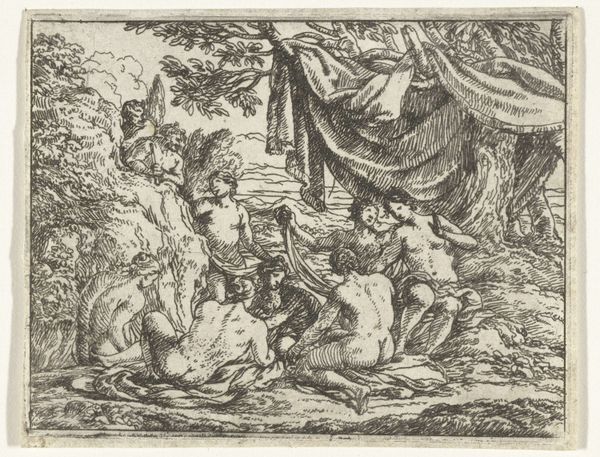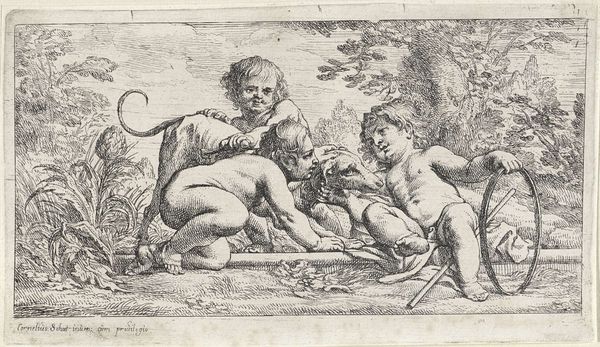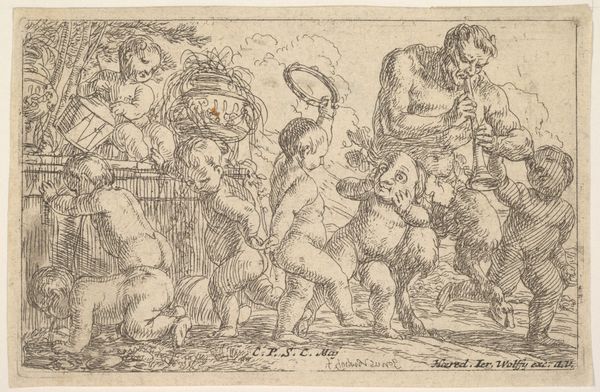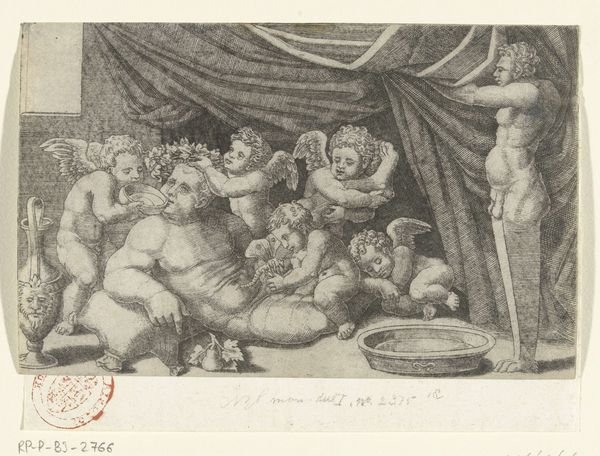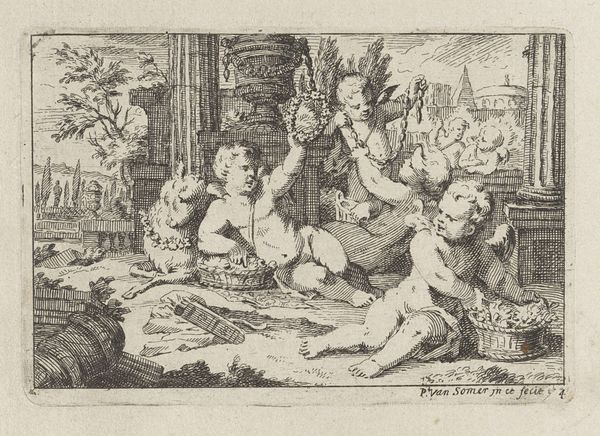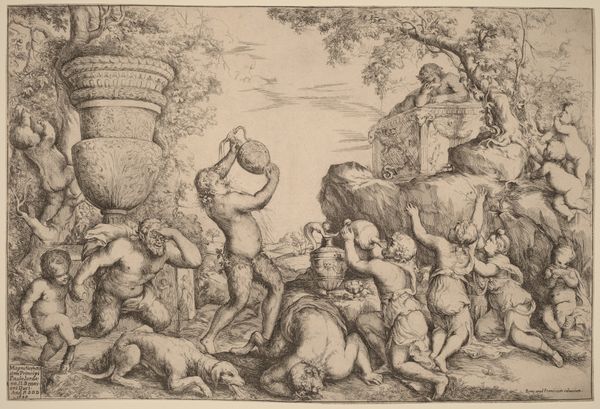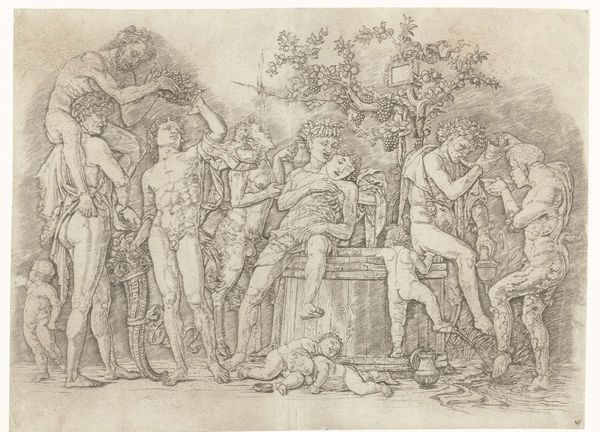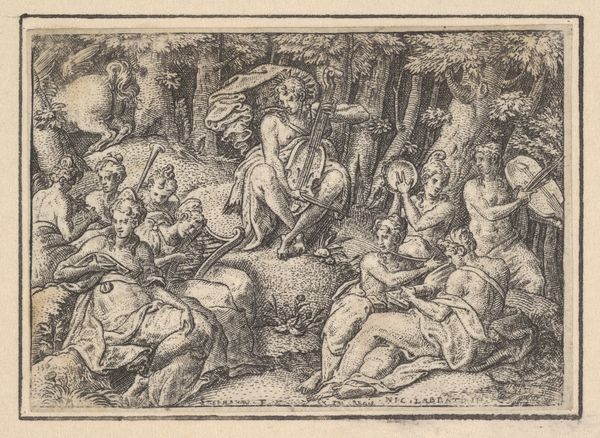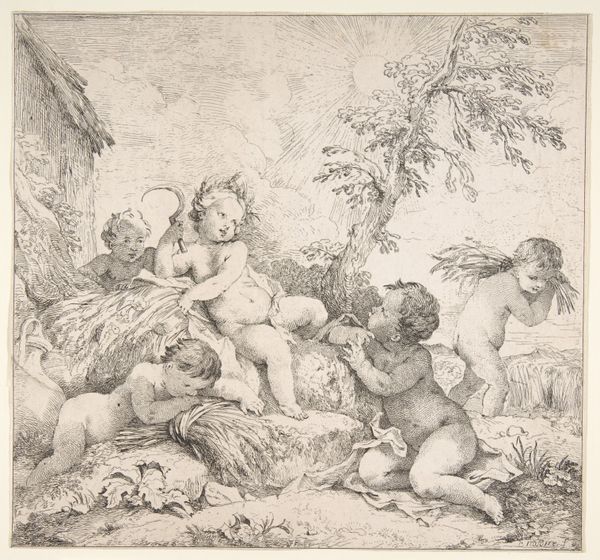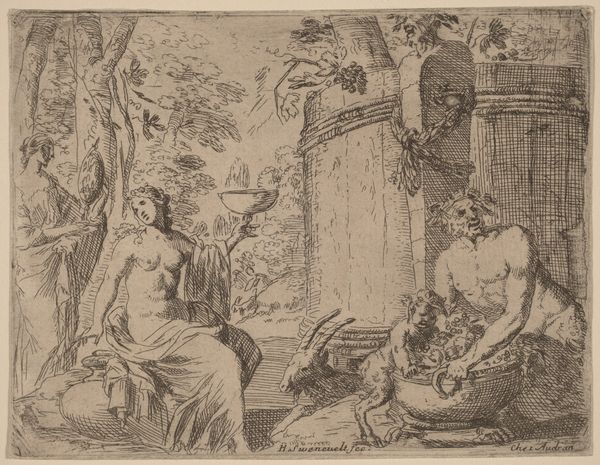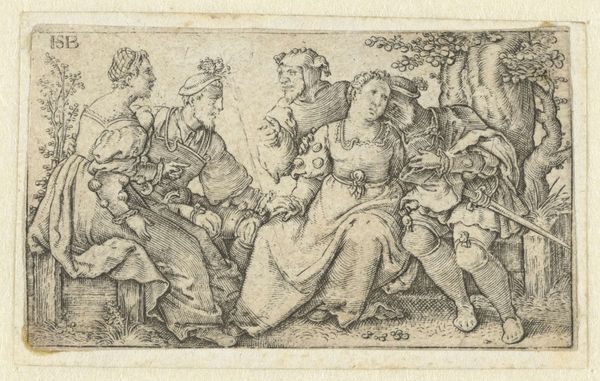
print, engraving
#
allegory
#
baroque
# print
#
figuration
#
history-painting
#
engraving
Dimensions: height 260 mm, width 375 mm
Copyright: Rijks Museum: Open Domain
Curator: This engraving, likely dating back to around 1600, is titled "Silenus". Editor: There's a distinctly boisterous energy. I notice the play of light and shadow created by the engraver's lines. What's your take? Curator: Well, traditionally, Silenus, who appears prominently here, represents a wealth of complex narratives. In Greek mythology, he embodies wisdom but also drunkenness, often seen as a tutor or companion to Dionysus, god of wine and revelry. His portrayal, as observed in this work, is especially significant in examining societal perceptions of the body, power, and knowledge within a Baroque context. Editor: I see, and the composition surely echoes that complexity. Look at the textures, the almost chaotic arrangement, with that prominent barrel backdrop. Curator: The presence of a barrel speaks volumes. Consider its connection to the concept of abundance but also the intoxicating influence it suggests in connection to socio-political structures of 17th century Europe and its gendered dimension of celebration. It acts as both container and facilitator of a transformative and disruptive force. Editor: You're right, the interplay of these bacchanalian characters and the imposing barrel do create an intriguing sense of tension. There's a duality—order and chaos coexisting in the etching’s very lines. Curator: Absolutely. The image is both celebratory and cautionary, reflecting the ever-present tension between societal norms and individual desires. This engraving doesn’t merely depict a scene; it poses fundamental questions about who gets to indulge and who dictates those rules, themes resonating throughout history even today. Editor: A valuable perspective on how we may consider how classical motifs engage the cultural anxieties of later periods and reflect into the present. Thanks.
Comments
No comments
Be the first to comment and join the conversation on the ultimate creative platform.
